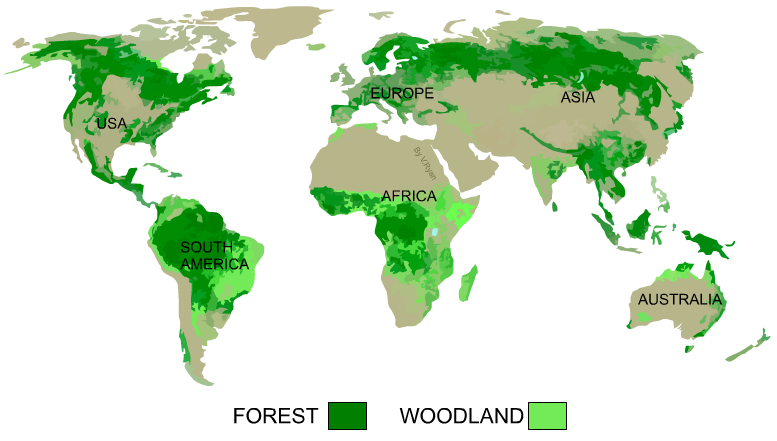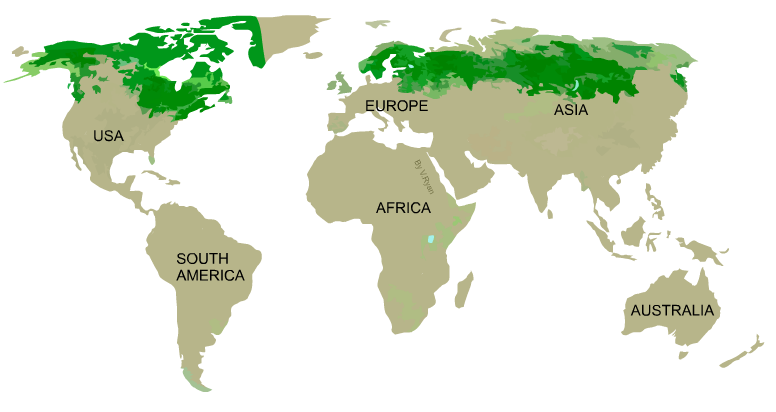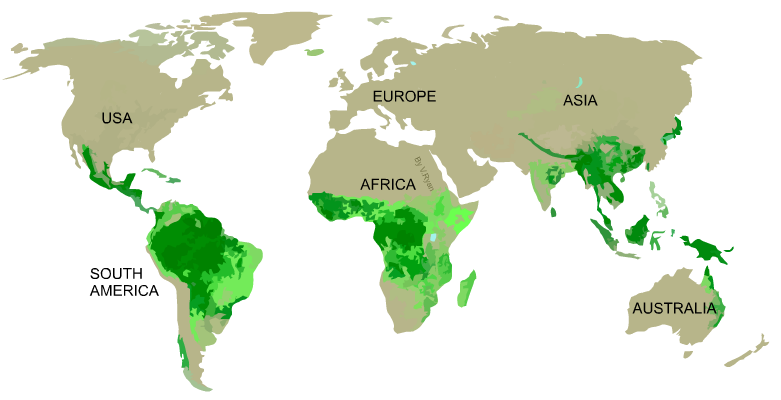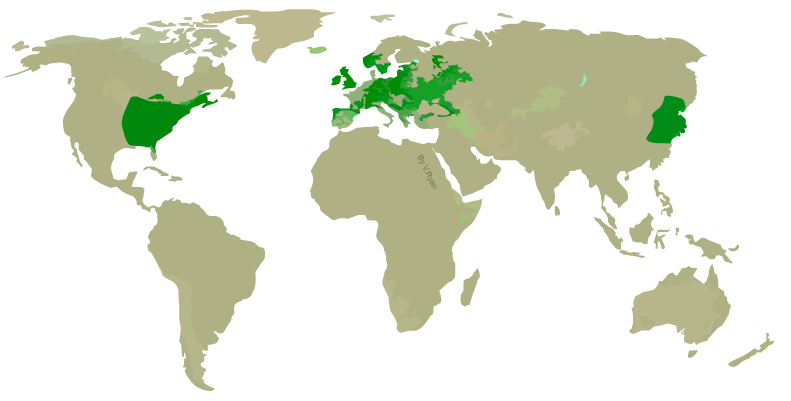| CLICK HERE FOR INDEX PAGE |
| FORESTS AND WOODLANDS WORLD DISTRIBUTION OF NATURAL WOODS |
| V. Ryan © 2011 |
| PDF FILE - CLICK HERE FOR PRINTABLE WORKSHEET - 1 |
| PDF FILE - CLICK HERE FOR PRINTABLE WORKSHEET - 2 |
|
Forests are one of the worlds most a precious natural
resources. From Tropical Rainforests to the Boreal Forests of North
America and Russia, forests are under threat from too much logging /
harvesting and too little replanting. This is due to world demand for
natural woods, from Pine, to exotic hardwoods such as Rosewood. |
 |
| BOREAL FORESTS |
| Boreal Forests, which extend in broad bands across North America and Eurasia. - Woods such as are Spruce, Fir, and Pine, Birch, Aspen, Willow, and Rowan are harvested from these forests. The trees are used in paper, newsprint and pulp manufacture, house building, furniture manufacture, veneer and plywood manufacture. |
 |
| TROPICAL RAINFORESTS |
| The Rainforests of South America and Africa cover approximately 6% of the earths surface. This percentage is falling, because of deforesting due to pressure from agriculture and logging of trees. They provide a range of exotic woods including Mahogany, Teak, Rosewood, Balsa or Sandalwood, Melina and Okoume. Mahogany, a popular hardwood, is found mainly in South America rainforests whilst Teak is found in Asian and Indian Rain forests. |
 |
| TEMPERATE FORESTS |
| The Temperate Forests are also seen as a natural resource. They consist of mainly deciduous trees (trees that lose their leaves in winter). The temperate forests are found in the Northern Hemisphere, particularly on the East Coast of North America, Central and Northern Europe and Eastern China. The woods produced from these forests include Oak, Maple, Beech and Elm. Today temperate forests are only twenty five percent of their original size. This due to human expansion, agriculture and logging of trees for timber. |
 |
| Due to logging and forest clearance for
agriculture and urban expansion, only ten percent of the land area of the
world is continuous forest. Most countries now have fragmented forest. These forests are one of the worlds greatest resources. We use the varies species woods to manufacture our furniture and in the construction of buildings and houses. Forests and woodlands provide chemicals and medicines for our daily needs. |
| CLICK HERE FOR RESISTANT MATERIALS INDEX PAGE |